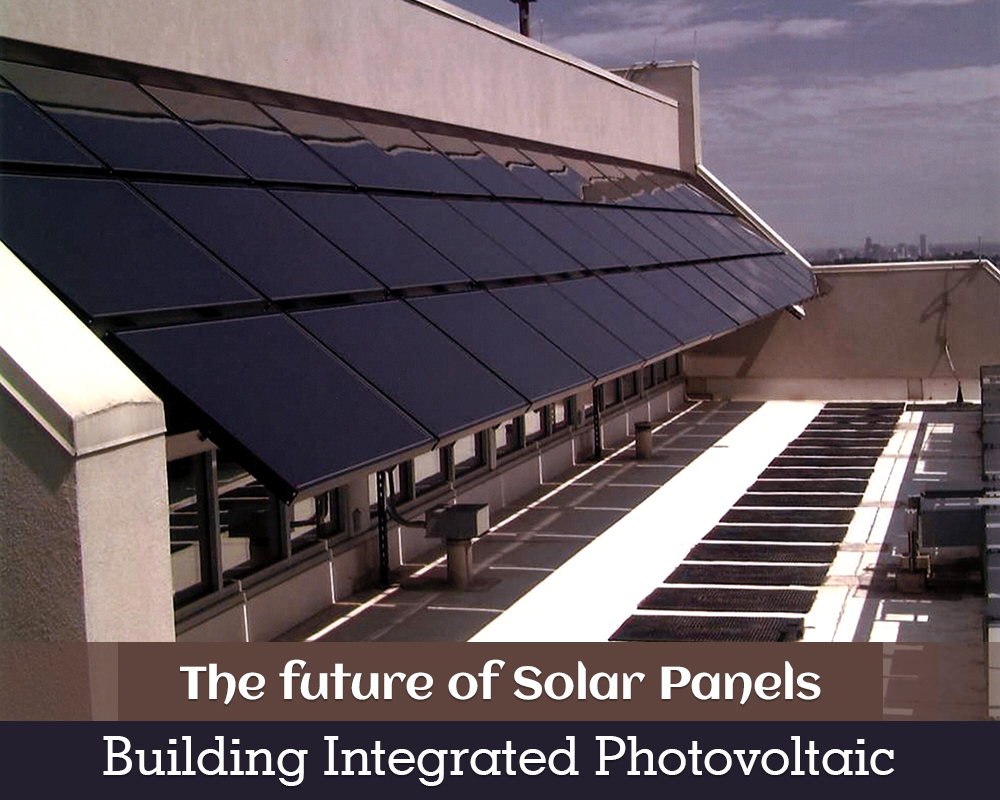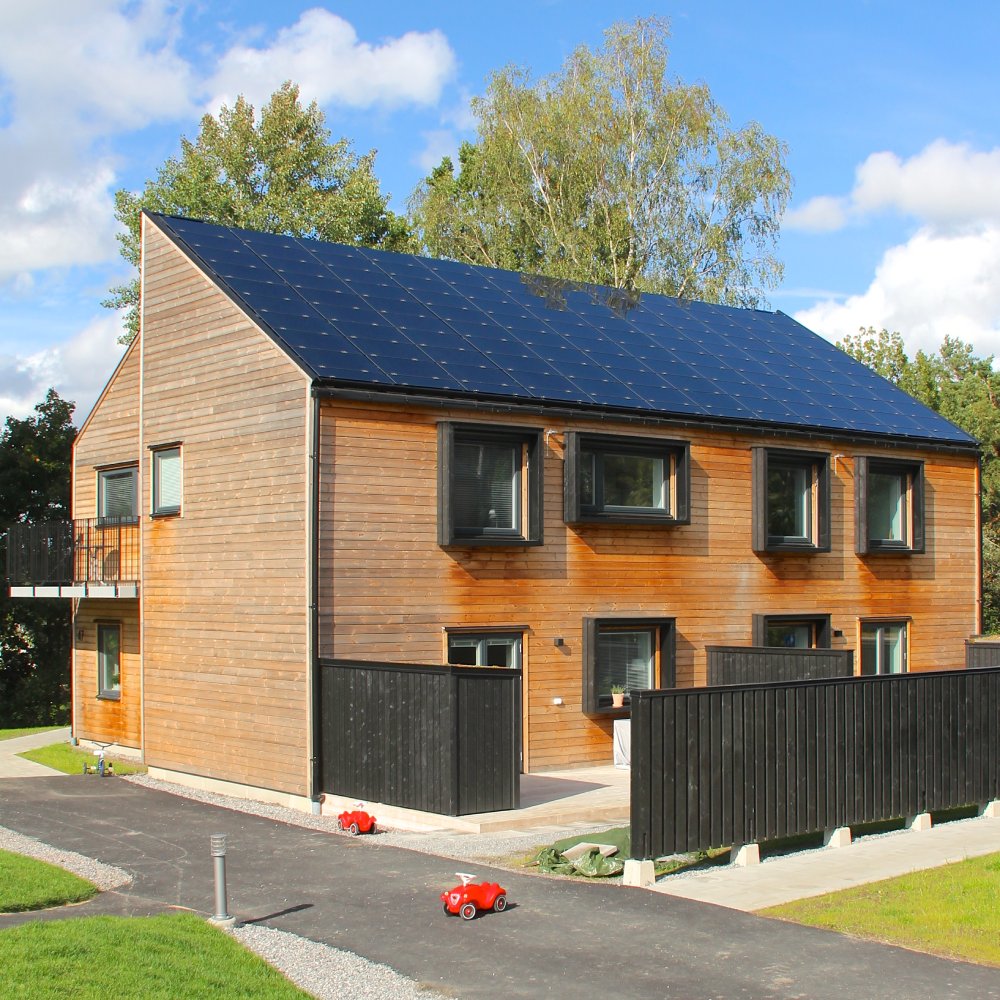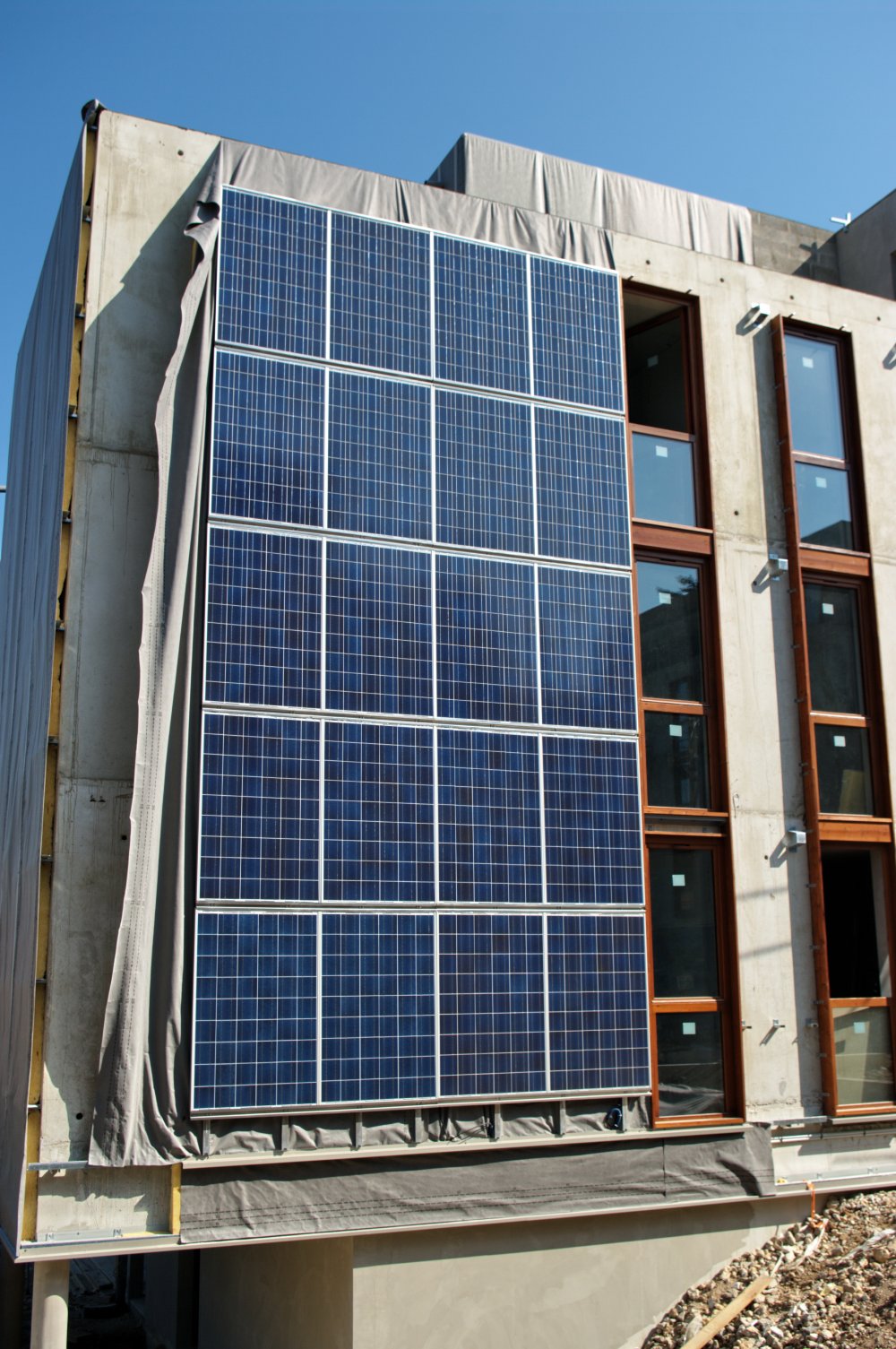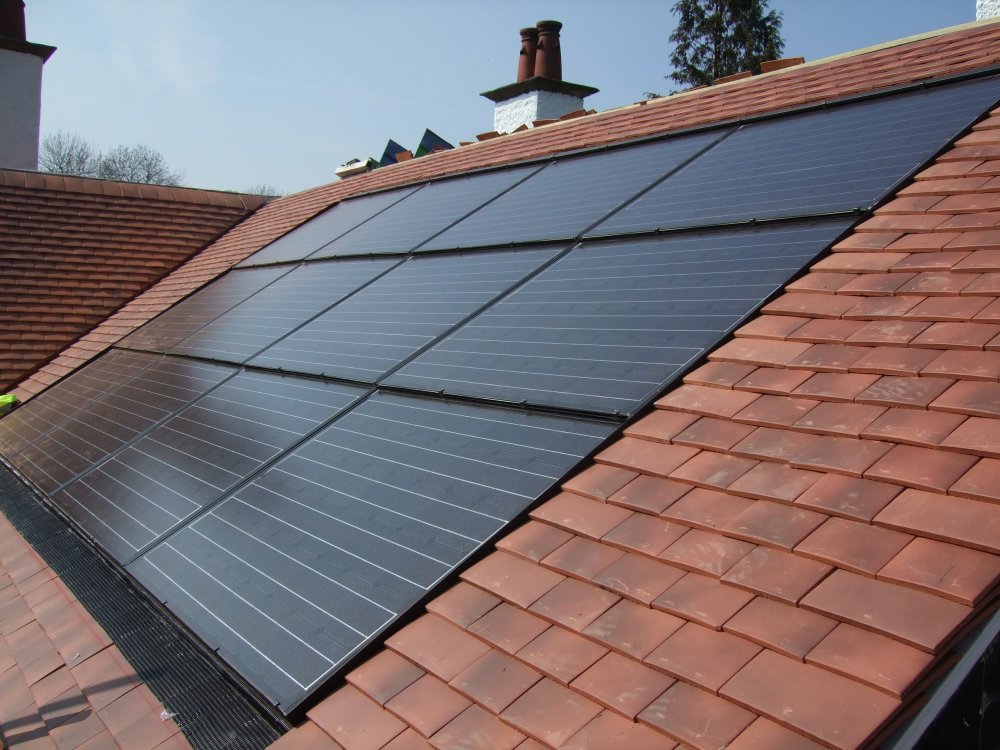What is Building Integrated Photovoltaic or BIPV System?
(BIPV) Building-Integrated Photovoltaic is a system with the concept of converting solar energy into electrical energy using special types of solar cells for domestic utilization. BIPV is an upgraded form of conventional solar panels and systems, which enables electricity generation from the solar energy, on-site itself.
The idea behind the invention of the BIPV system, an eco-friendly technology was to integrate the solar panels in the building envelope and to produce the required amount of electricity from the solar energy.

What makes BIPV different from the conventional solar systems is that conventional solar panels can only be installed on roofs and terraces of buildings/houses, while Building integrated solar panels can be installed on the building envelope such as the roofs, skylights and facades.

Here’s the practical example that how the integrated photovoltaic system works in roof of the house.
Definitely, implanting building integrated photovoltaic solar panels is eye-catching. But have you wondered how you can install the same at the roof of your home? We are here to provide the complete prior guide that you need to learn while planning to install Solar PV System in the rooftop.

The above figure clearly indicates the photovoltaic glazing as facades in the high rise building to enhance the exterior look.
Beside construction photovoltaic facades, the trend has also turned the tables to make efficient use of ceramic glass and create attractive false front of the building. Have a look into the below link and get amazing ideas to make ceramic glass facades.

The sunlight is essential part in the ventilation of the house. The PV Glazing is also used as skylights to in the buildings and in the residential home as well to contribute the required ventilation.
Building Integrated Photovoltaic became commercially popular for the first time during the 1990s and soon replaced the conventional photovoltaic systems or solar systems. The photovoltaic systems (PV systems) were considered as not much effective during late 80s and early 90s. A lot of improvisation happened in this technology later to make it effective and most of these technological advancement resulted in not just making the system effective, but also brought in the much-needed cost effectiveness too.
As time went by, Integrated PV System gained popularity due to its effectiveness, its efficiency to convert more solar energy into electrical energy and relatively low cost. Since BIPV also came across as a versatile product, it soon became a much sought after building material that could replace the conventional exterior cladding materials like glass. BIPV also provides excellent aesthetics, similar to the architectural glass while also doubling up as an energy generation unit.
How does Building Integrated Photovoltaic System Works?
The working of BIPV is similar to the conventional solar panels as both of them have a similar concept of producing electrical energy from solar energy. The sunrays falling on the BIPV panels are absorbed by them. The BIPV solar panels have different efficiency depending on the types of panels. The sun rays absorbed by the panels are sent to the inverter. An inverter is a device that converts the direct current (DC) to an alternating current (AC). As soon as the direct current is converted into an alternating current, it is sent to the grid. Now from the grid, the electric current or the electrical energy is available for use. The whole building gets the power from there. All the components of BIPV are connected using wires and cables of the required specifications.
Advantages and disadvantages of Building Integrated Photovoltaic
Advantages:
The advantages of building integrated photovoltaic are as follows:
01. BIPV enables the building to generate its own electricity. So the building and its occupants would not rely on electricity providers for electricity.
02. BIPV panels provide excellent and pleasing aesthetics to the exterior of the building.
03. It has a wide range of applications. BIPV can be installed in facades, roofs, skylights and windows of the building.
04. The electricity generated by the BIPV does not harm the environment. So it is also an eco-friendly alternative for generating electricity.
05. BIPV, replacing the conventional building materials, helps to save the material costs.
06. If it is fully utilized according to its designed life period, it is a cheaper alternative to the conventional solar panels and conventional building materials too.
07. It protects the occupants of the building from various weather conditions like rain, snow, cold, heat, extreme winds and thunderstorms.
08. BIPV acts as thermal insulation to the building. The BIPV panels prohibit unwanted heat from entering the building.
Disadvantages:
The disadvantages of building integrated photovoltaic are as follows:
01. The initial cost of BIPV is higher when compared to the conventional solar panels. This has made it less popular in some parts of the world.
02. BIPV is not suitable for the buildings which are already constructed.
03. The installation of BIPV is a bit complex, due to which higher labor costs are incurred.
Conclusion
Overall, it is easily understood from the above study that Building Integrated Photovoltaic is technique, has its root since many years back yet the constant improvement in the system leads to great advantages in terms of cost, huge electricity production at affordable rate and stands high for its durability. Without a thought, it is feasible to adopt integrated photovoltaic technology and raise the living standards.
Not only BIPV Solar technology but if you are an Indian and installing solar panels in your roof tops concerns you a lot, then have a look into the below link.
Now, after going through all these details in brief, if the question arises in your mind about the reliability of solar panels and its benefits, follow the link and get answers to your doubts.
Choosing the best solar panels and precisely installing it is obviously responsible task but work doesn’t end here. Apart from these, regular maintenance is as important as other things to keep in mind. Study the below article and learn the appropriate ways to preserve solar panels.
Image Courtesy: Image 2, Image 3, Image 4
Author Bio
Harsh Ved – I am a civil engineer, working as a site engineer and a freelance content writer. I hold a Master’s degree in Construction Engineering and Management. My keen interest lies in writing and research work. I have also written a research paper on “Building Integrated Photovoltaics” that is published in IRJET Journal.







